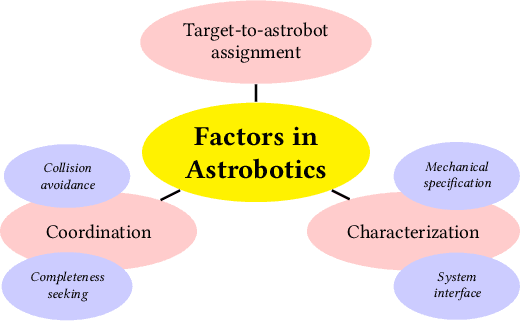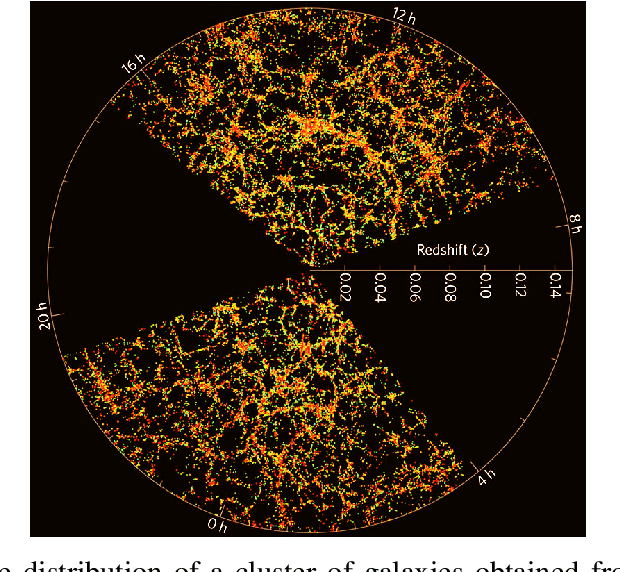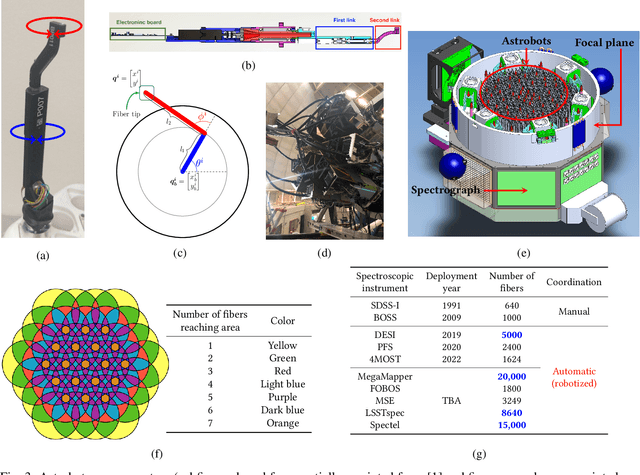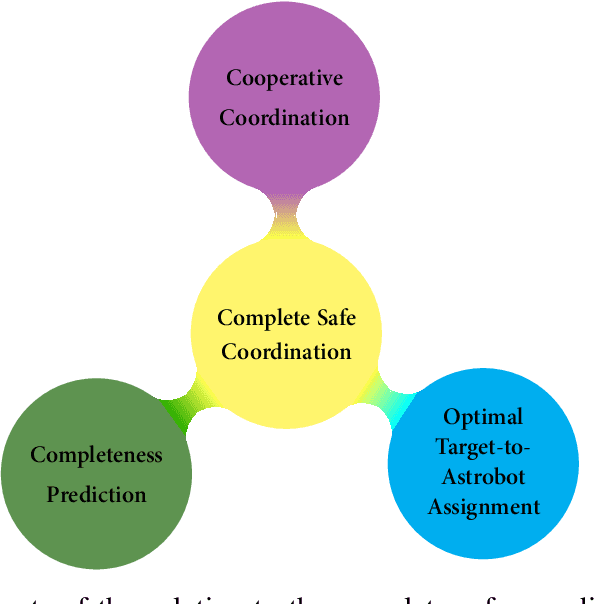Astrobotics: Swarm Robotics for Astrophysical Studies
Paper and Code
Oct 05, 2022



This paper introduces the emerging field of astrobotics, that is, a recently-established branch of robotics to be of service to astrophysics and observational astronomy. We first describe a modern requirement of dark matter studies, i.e., the generation of the map of the observable universe, using astrobots. Astrobots differ from conventional two-degree-of-freedom robotic manipulators in two respects. First, the dense formation of astrobots give rise to the extremely overlapping dynamics of neighboring astrobots which make them severely subject to collisions. Second, the structure of astrobots and their mechanical specifications are specialized due to the embedded optical fibers passed through them. We focus on the coordination problem of astrobots whose solutions shall be collision-free, fast execution, and complete in terms of the astrobots' convergence rates. We also illustrate the significant impact of astrobots assignments to observational targets on the quality of coordination solutions To present the current state of the field, we elaborate the open problems including next-generation astrophysical projects including 20,000 astrobots, and other fields, such as space debris tracking, in which astrobots may be potentially used
 Add to Chrome
Add to Chrome Add to Firefox
Add to Firefox Add to Edge
Add to Edge